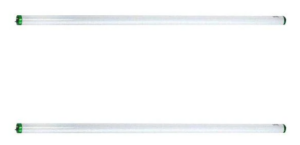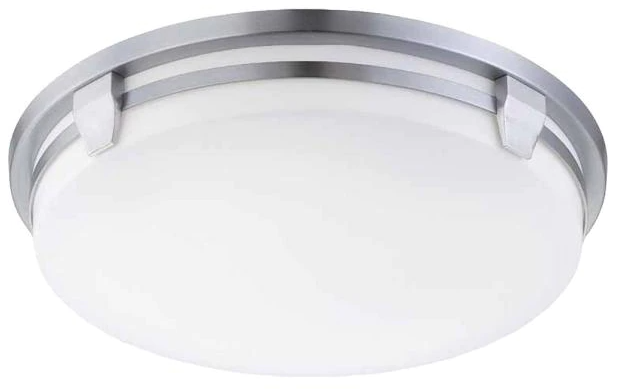A fluorescent lamp is a low pressure, mercury-vapor, gas-discharge lamp that uses fluorescence to produce light through chemical reaction. Fluorescent lighting converts electrical energy into useful light much more efficiently than incandescent bulbs.
Fluorescent lamps regulate their electric current through the use of a ballast, unlike incandescent lamps. The lower energy costs typically offset the initial installation cost of fluorescent lighting. Fluorescent bulbs may last 10 to 20 times longer than incandescent bulbs. As a fluorescent bulb ages, it becomes less and less efficient. To clarify, the bulb needs more voltage in order to produce the same amount of light it used to. Eventually, that will exceed the amount the ballast is capable of, and the bulb dies.
Traditional – or linear – fluorescent bulbs are mostly straight, but there is also another type called circline lamps. But this was mostly aesthetic, as they are most often used in bathroom vanities or as a ceiling-mounted fixture.
Compact Fluorescent Lighting
Now fluorescent lights are available in a smaller size, similar to incandescent lamps. They are being used in many homes and offices as an energy-saving solution, as fluorescent lighting is most cost-effective when lights must be on for many hours at a time. These are called Compact Fluorescent Lamps. Traditional fluorescent lamps have pins that set them into their fixture. However, CFL’s can have a bi-pin structure or a traditional Edison base, which screws into its’ base (also called spiral-type). While traditional fluorescent bulbs need a separate ballast to start the chemical reaction that makes them light up, CFL’s have a ballast built right into their base.
Pros and cons of fluorescent lighting
Pros
The biggest pro to fluorescent lamps are their cost effectiveness when they are required to be on for long periods of time. They last longer than incandescent bulbs, and that’s also a big selling point when you have areas that aren’t easy to access. This is why they are very popular in commercial and industrial settings. They also don’t create much heat, so if you need to light a temperature-controlled room, fluorescence is an option. They come in a few variations of white.
Cons
Unfortunately, there are more cons to fluorescent lighting than there are pros. For example, there’s the toxicity. There are both phosphorous and mercury within the bulbs which are hazardous to people and pets as well as the environment if the bulb is broken. When a fluorescent bulb is broken, the mercury gas can be released. The phosphorous, however, remains on the inside of the glass and is toxic if touched.
Secondly, if they’re turned on and off frequently, the bulbs tend to diminish more quickly. In a bathroom or kitchen setting, this can cause a homeowner to change out the bulb more often than its’ incandescent counterpart.
Third, fluorescent bulbs give off ultraviolet light. It may not be a lot, but for anyone sensitive to UV, it could be a problem. In that same vein, this type of lighting can be hazardous to anyone with light sensitivity, or can cause many other negative effects.
Also, fluorescent lighting is omnidirectional. In other words, the light scatters everywhere instead of lighting the specific area where it’s needed. This causes a waste, as only 60-70% of the light it gives off is actually being used, so you may actually need more lighting to make up for the lost light. Another con is specific to fluorescents that have an electromagnetic ballast. They can start to buzz or hum if something within isn’t functioning properly, and ballasts aren’t cheap to replace.
The con that is taken least into account is the environmental impact. Many don’t know that the EPA actually has a special guideline to properly dispose of fluorescent lamps. Because of the mercury and phosphorus contained within, there are regulations imposed by the government that separate these bulbs from general and household waste.
Also, they only come in white. The “temperature” of the color varies, but it’s still white.
For more information on fluorescent lighting, visit the US Department of Energy.
Disclaimer:
We take great care to provide the most accurate information on this page. However, all content is for informational purposes ONLY and should be considered as General Knowledge or even as entertainment. It should not be relied on, as every case and/or reader is different.
ALWAYS call and check with a qualified electrician before attempting or acting upon anything you read on this site. Changes are always happening within the NEC, standards and regulations, and State, County, and City by-laws.









